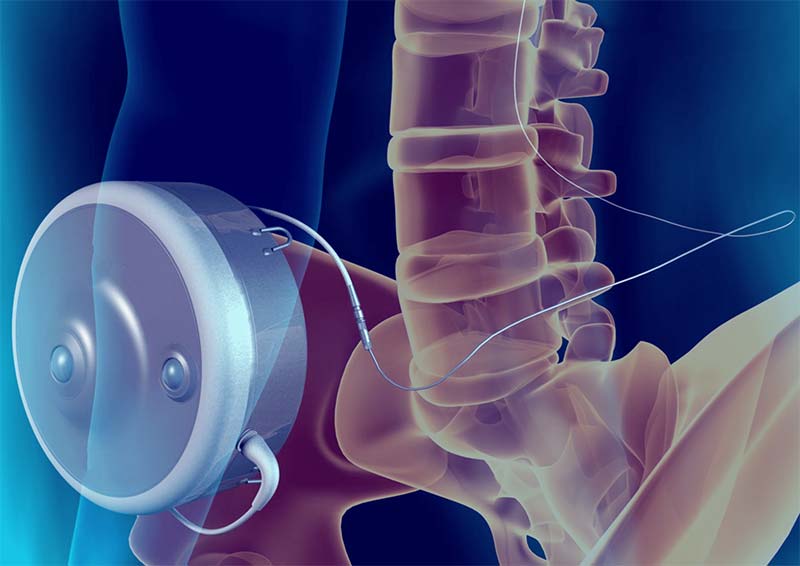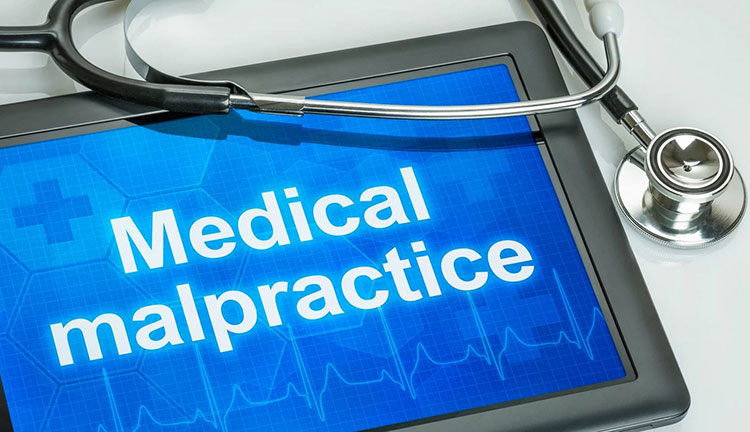What is Baclofen?
Baclofen is a muscle relaxer that you can expect your child's medical provider to prescribe as a first-line treatment for birth injury induced spasticity. A child living with Spastic Cerebral Palsy who is given Baclofen may experience decreased muscle stiffness and spasms, improved mobility, and increased comfort in performing daily activities. This medication can be administered orally or via an intrathecal pump into the spinal canal.

If your child has been diagnosed with cerebral palsy and you believe medical negligence is to blame, you may be able to recover financial compensation to help pay for your child's medications and treatments.
Cerebral Palsy Lawyers
1-888-987-0005The cerebral palsy attorneys at Miller Weisbrod Olesky are dedicated to providing compassionate legal support to families and their children living with a brain injury or birth injury, such as cerebral palsy.
At Miller Weisbrod Olesky, our cerebral palsy attorneys understand how overwhelming it can be for families dealing with the consequences of a childbirth injury like cerebral palsy. We are committed to you and your family get the justice you deserve and will fight tirelessly for the compensation you need to provide your child with the best possible care.
Here we want to provide some basic understanding of the birth injury conditions that can lead to spasticity, what baclofen is and how baclofen can assist your child that is living with cerebral palsy or other birth injury conditions.
What is Spasticity in Cerebral Palsy?
Spasticity is the most common movement disorder associated with Cerebral Palsy, impacting approximately 80% of people with the condition. It is usually caused by an injury to the developing brain, often from low levels of oxygen in the brain, shortly before or after delivery. Muscle spasticity is debilitating and often leads to chronic pain and difficulty performing day-to-day activities such as dressing or getting out of bed.
Alleviating the discomfort caused by spasticity typically involves physical and occupational therapy, medications, or surgery in more severe cases. There are several different medications that can be taken to reduce the severity of CP symptoms, such as spasticity.

How Does Baclofen Help Cerebral Palsy?
Baclofen is a medication that works to relax certain muscles in the body and reduce spasticity and muscle tightness. The medication acts on the spinal cord and brain receptors to improve mobility, reduce muscle stiffness, and increase range of motion.
Baclofen is often used alongside other treatments like physical therapy. It can be administered orally or through a surgically inserted pump. One option may be more appropriate than the other, depending on the location and severity of an individual's motor impairments.
Learn More
Physical Therapy for Cerebral Palsy
Patients suffering from mild motor impairments will likely benefit from oral medication, while those with more severe impairments will likely benefit from more targeted delivery methods like intrathecal pumps.
Individuals who experience relief from spasticity by using Baclofen may report decreased pain, improved range of motion, and increased functional ability. The use of Baclofen is also recommended for chronic spasticity caused by multiple sclerosis and spinal cord injuries. There are many brands of Baclofen, including Lioresal®, Kemstro®, and Gablofen®. Before prescribing Baclofen, your doctor will discuss its benefits and side effects.
The Two Main Types of Baclofen Formulations
There are two major types of Baclofen formulations: oral and intrathecal.
Intrathecal Baclofen is delivered directly into the spinal fluid through a pump, whereas oral Baclofen is taken by mouth as tablets or capsules. Patients should carefully weigh the advantages and disadvantages of each formulation and choose the best option based on their unique needs. A healthcare provider can provide guidance on factors such as dosage requirements, side effects, and the effectiveness of each treatment method.
Oral Baclofen

Oral Baclofen can be prescribed by your child's doctor, either in the form of a tablet or liquid. Although oral Baclofen can be highly effective at controlling involuntary muscle spasms, there are some adverse side effects.
Some of the side effects patients who take Baclofen for CP report include:
- Drowsiness
- Nausea
- Constipation
- Fatigue
- Weakness
- Constipation
- Headaches
Less common side effects of oral Baclofen include breathing problems, chest pain, blurred vision, and seizures. Taking oral Baclofen is safe for both adults and children over the age of 12.
If your child suddenly stops taking Baclofen, they may experience withdrawal symptoms such as increased muscle spasticity, confusion, and hallucinations. To reduce the chance of experiencing serious side effects, it is crucial to take Baclofen exactly as prescribed.
Intrathecal Baclofen Pump

When oral medications are not sufficient to control spasticity, intrathecal Baclofen may be a good alternative. Intrathecal Baclofen pumps are a specialized neurosurgical treatment option for spasticity that can provide your child with long-lasting relief from symptoms. The Baclofen pump is surgically placed underneath your child's skin around the abdomen area by a neurosurgical team during a two-hour-long surgery. It is wirelessly programmed to provide a continuous feed of Baclofen into the fluid-filled area surrounding the spinal cord (intrathecal space). A catheter connected to the Baclofen pump delivers the medication directly to the affected area through a thin, flexible tube.
Among the most common and serious side effects of intrathecal (baclofen pump) therapy are:
- Loose muscles
- Upset stomach
- Dizziness
- Vomiting
- Sleepiness
A doctor must periodically refill the pump approximately every three to four weeks. Additionally, based on the patient's specific needs, a doctor can adjust the dose and timing of the transfers as necessary. After about five years, this device must be removed and replaced with another surgery.
Intrathecal Pump Versus Oral Baclofen
One of the advantages of oral Baclofen compared to the intrathecal pump is that it is less invasive and requires no surgical implantation. Taking the medication at home also eliminates the need for frequent doctor visits or adjustments to the pump settings. Additionally, oral Baclofen lowers the risk of infection and device malfunction associated with surgical procedures.
Potential complications of baclofen pumps include spinal fluid leak caused by surgery, unwanted movement of the catheter or pump, and pump or catheter failure that can lead to overdose or withdrawal symptoms. Surgically implanting, maintaining, and periodically refilling a pump can be costly, making oral Baclofen a more affordable option.
The pump approach is 1,000 times more potent than oral Baclofen because the medication is administered directly into the spinal fluid. This can make a big difference in symptom relief for children who've already tried Baclofen via an oral medication. Also, because Baclofen is delivered by the implantable device exactly where it is needed, lower doses are effective in improving spasticity without adverse effects such as fatigue or sedation.
With the intrathecal pump, the patient doesn't have to remember to take the oral medication at the same time every day. A doctor can program the pump to release the dose matching their unique needs at the appropriate time.
Furthermore, since the medication does not enter the bloodstream, it won't interact with other medicines your child may take for seizures or other conditions associated with cerebral palsy.
The treatment can be extremely beneficial in improving a child with CP’s muscle stiffness and spasms, however, they must weigh at least 32 pounds and maintain that weight. It is essential to speak with a specialized physician before deciding on what the best treatment method may be for your child.
The Long-Term Benefits of Baclofen for Improving Mobility
Although cerebral palsy is not a progressive disorder, spasticity in children with this condition may worsen over time. Therefore, as children age, they may develop more severe motor impairments or muscle contractures if their spasticity is not managed correctly.
The nervous system consists of neurons, which communicate with one another via electrical currents called action potentials. An action potential will fire when the cell reaches a certain threshold, sending an electrical signal down the axon. By slowing down action potentials, Baclofen prevents neurons from constantly telling muscles to contract, ultimately preventing spasticity.
While the effects of Baclofen are temporary, it relieves spastic muscles enough for a child with CP to focus on practicing proper movement techniques. Taking advantage of the temporarily-induced low muscle tone by regularly participating in intensive physical therapy will help strengthen the neural connections in the brain for various movement patterns and allow the child to develop more permanent muscle control and improved motor function.
Cerebral Palsy Treatments & Therapies
Filing a Birth Injury Lawsuit for a Child with Spastic Cerebral Palsy
Parents may file a birth injury lawsuit on behalf of their child against negligent medical professionals responsible for causing their child to sustain a preventable birth injury. Families may seek compensation to cover the cost of their child's medical care and treatment costs through a Birth Injury lawsuit. It is important to note that while every case is different, most lawsuits typically follow a similar process. If your child was injured by a doctor, nurse, or other healthcare provider, an experienced birth injury lawyer can file your case, gather evidence, and pursue full and fair compensation on your behalf.
Free Case Review
Our experienced cerebral palsy lawyers will determine if you are eligible to file a birth injury lawsuit during your complimentary case review, which you can schedule by contacting us via our toll-free line at 888-987-0005 or by filling out our convenient online form on this page. If we can determine that medical malpractice may have played a role in your child's birth injury, your case will likely be accepted by our team.
Gather Evidence
A birth injury malpractice attorney will gather information and evidence related to your case as soon as they determine you qualify to pursue a lawsuit. Evidence like medical records, witness statements, and the employment history of the medical professional in your case are crucial to proving that your child's birth injury was caused by medical negligence.
File the Lawsuit
After gathering the necessary information, your attorney will file your lawsuit in the appropriate court. As soon as the case is filed, you and your family will become the plaintiffs (the party taking legal action). The healthcare professionals who may be responsible for causing your child's injury will become the defendants (the party being sued). The statute of limitations in each state governs the deadline for filing a birth injury lawsuit.
Your lawyer will ensure your case is filed on time according to your state's statute of limitations. The lawsuit outlines the charges against the defendants and gives them around 30 days to respond. If the defendants fail to respond, judgment will automatically be entered in the plaintiff's favor. In the event the defendants respond but fail to assume responsibility, they will explain why they believe they are not to blame for your child's injury.
Discovery
Your attorney will gather more evidence, such as medical records, medical expense reports, and other documents related to your case, once the defendants file their response. During this time, you, your loved ones, and medical experts may be required to give statements under oath. The parties will also exchange information and evidence relevant to their respective cases in an effort to build strong arguments. To prove that medical professionals failed to uphold a high standard of care, an experienced attorney will collect all legally required evidence.
Settlement Negotiations
Settlement negotiations can begin once both parties have prepared their cases. During this phase, both parties will try to reach an agreement (settlement) that allows them to resolve their dispute without going through a full trial. Should a settlement be reached, the defendants will pay you a lump sum, and all legal action will stop. If the case cannot be resolved during this stage, our lawyers have the experience and knowledge to represent your best interests in court.
Go Through a Trial
Cases that do not settle through settlement negotiations will go to trial. A jury and judge will examine all the evidence presented by both legal teams during the trial. A verdict is reached after each party has presented their case and a judgment has been entered. The losing party may decide to appeal the decision in some cases. The disadvantage of trials is that, while you might receive more compensation than you would receive from a settlement if you lose, you risk receiving no compensation at all. Our cerebral palsy lawyers can help you obtain the compensation you need to cover the cost of your child's care and other injury-related expenses.
Medical Malpractice in Birth Injury and Cerebral Palsy Cases

When doctors, nurses, or other healthcare professionals commit medical negligence before, during, or after delivery, it can result in injuries to a mother, her child, or both. Even though not every birth injury is caused by medical malpractice, an experienced birth injury attorney can help make sure your child is compensated fairly if their provider was negligent in their care.
There are several examples of acts of medical negligence that can cause birth injuries during childbirth:
- Failure to recognize and treat signs of maternal or fetal distress, such as lack of oxygen
- Improper use of forceps or a vacuum extractor
- Using too much force during delivery
- Failure to schedule an emergency cesarean section (C-section)
- Delaying in performing an emergency C-section
- Failure to properly monitor the mother during her pregnancy
- Failure to administer the proper antibiotics or dosage to a mother with an STD or other maternal infections before delivery
- Ignoring or misreading a fetal monitoring strip
- Failure to detect and treat an umbilical cord complication
- Failure to diagnose and treat preterm labor in a timely manner
- Failure to treat maternal elevated blood pressure (preeclampsia)
- Failure to properly resuscitate a newborn after delivery
- Failure to treat jaundice and kernicterus
- Failure to respond to signs of a placental abruption
- Failure to detect a severe birth defect on a prenatal ultrasound
- Failure to carefully manage an abnormal fetal position
- Administering too high a dose of labor-inducing drugs like Pitocin
Failing to address complications such as a preterm delivery or umbilical cord issues can result in a serious birth injury. As leaders in our communities, we rely on medical professionals to provide high-quality health care.Generally, when people think of medical malpractice liability, they picture doctors and nurses. However, other parties involved in the care of a pregnant woman and her baby may also be held responsible in a birth injury lawsuit.
Medical negligence may be committed by one or more of the following types of medical providers or facilities:

- Obstetricians (OB-GYN)
- Other obstetric professionals
- Pediatricians, including pediatric neurologists
- Anesthesiologists
- Labor and delivery nurses
- Midwives
- Nurses
- Hospitals and medical facilities
- Hospital administrators
- Other hospital staff
- Neonatal nurses and aids
- Neonatologists or pediatricians providing neonatal care
- Respiratory therapists
- Maternal-fetal medicine physicians and specialists (MFM)
- Laboratory staff
Although medical malpractice suits are often filed against healthcare providers like doctors and nurses, hospitals can also be held liable in certain circumstances. A hospital can be vicariously liable for an employee's negligent actions that caused harm during work hours or while the employee was performing a job-related task. For example, if an OBGYN makes a negligent mistake during pregnancy or delivery, the hospital can be held vicariously liable.
A hospital may also be held directly liable for its own actions. For instance, if a hospital fails to adhere to medical protocols and standards, they may be directly liable for a patient's injuries. We can help you determine whether your child's birth injury was caused by a doctor, the hospital itself, or another medical professional.
When you file a birth injury claim, your lawyer must be prepared to present evidence that proves that a doctor's or hospital's negligence caused your child's birth injury. An injured plaintiff must be able to prove each of the following four legal elements in their birth injury lawsuit.
- Duty of care: Before the provider will have a duty of care, the plaintiff must be able to establish a provider-patient relationship. Upon establishing this relationship, the medical provider is expected to meet a relevant standard of care that a medical professional with the same specialization would have exercised under the same conditions.
- Breach: The next element the plaintiff must prove is that the healthcare provider or facility breached that duty by failing to meet the applicable standard of care.
- Causation: The plaintiff must then demonstrate that the healthcare provider's negligent care directly caused their or their child's injuries.
- Damages: Finally, the plaintiff must show that the harm they or their child suffered resulted in specific expenses and other losses. These losses may include anything from the cost of lifelong medical care to emotional suffering.
The plaintiff's attorney must present compelling evidence to establish liability and recover damages in birth injury cases. At Miller Weisbrod Olesky, our birth injury lawyers can collect evidence on your behalf, consult with medical experts to determine the cause of the injury, and identify all medical professionals who contributed to you or your child's birth injury.
What Damages are Available in Birth Injury Cases?
When a doctor or hospital's negligence, wrongful action, or lack of action before, during, or after childbirth results in injuries to you or your child, you may be entitled to seek financial compensation. Damages in birth injury lawsuits generally fall into two categories: economic and non-economic. Economic damages are the financial losses you have sustained as a result of the injuries you or your child suffered. Non-economic damages refer to subjective, monetary losses and are meant to compensate the victim for pain and suffering experienced because of the birth injury.

Economic Damages
- Medical expenses (including the cost of any future medical care)
- The cost of any medications or surgeries
- Rehabilitation and therapy costs (occupational, physical, and speech)
- Lost income or wages of parents (including future loss of income)
- The cost of assistive devices like wheelchairs or communication aids
- Lost future earning capacity (if the child's birth injury impacts the child's ability to work in the future)
- The cost of special education services and tutors
- Home modification costs (such as ramps or accessible bathrooms)
- The cost of assistive devices
- Costs associated with a caregiver or home nurse
Non-economic Damages
- Physical pain and suffering
- Reduced quality of life
- Disfigurement and permanent scarring
- Emotional or mental anguish
- Paralysis, scarring, and disfigurement
- Post-traumatic stress disorder (PTSD)
- Loss of consortium
Punitive or exemplary damages may be awarded in addition to economic and non-economic damages. Damages for this type of behavior are often hard to prove and are usually awarded when the medical professional's behavior is especially negligent or careless. These damages are intended to punish the at-fault party and deter others from committing similar wrongful acts.
The settlement award you may receive will depend on various factors, including the nature and severity of your child's condition, the impact of the injury on the child's quality of life, and the financial damages you have suffered. A birth injury lawyer can assist you in proving all your damages and calculating the value of your medical malpractice settlement.
Statute of Limitations Birth Injury Cases

A statute of limitations is a law that imposes a deadline for filing birth injury lawsuits. If you fail to file a claim before the statute of limitations "runs out," you may lose your right to pursue legal action and seek compensation. In some cases where an injury may not be immediately apparent, the statute of limitations may be extended.
The discovery rule prevents the statute of limitations from running until the injury is discovered or reasonably should have been discovered. It is also important to remember that the statute of limitations varies by state and the type of claim you're filing. A birth injury attorney can help you avoid missing all crucial deadlines related to your case.
Get the Legal Support and Guidance Needed Our Cerebral Palsy Lawyers

While no amount of money can ever fully compensate for your child's suffering, an experienced cerebral palsy lawyer can help ease the financial burden of caring for your child and make it easier for you to afford the best medical care, treatment, and educational opportunities. At Miller Weisbrod Olesky, our Cerebral Palsy lawyers are dedicated to helping you hold negligent doctors, hospitals, or other healthcare professionals accountable for your child's birth injuries.
Having achieved successful verdicts and settlements for medical malpractice clients in over 20 states, you can be confident that we will fight for the best possible outcome for you and your family. Our firm works on a contingency fee basis, meaning you will only pay fees if we win your case. We invite you to contact us at 888-987-0005 or fill out our convenient online form to schedule your free consultation with one of our attorneys.
